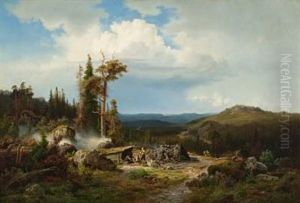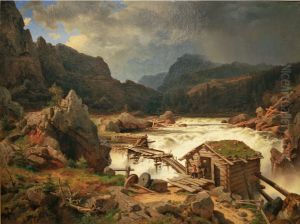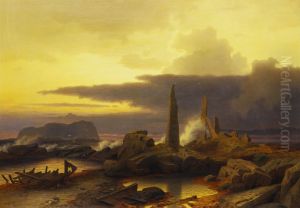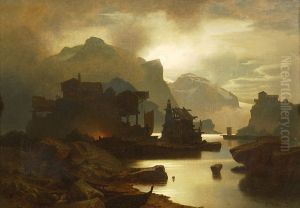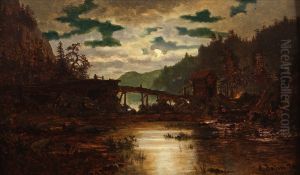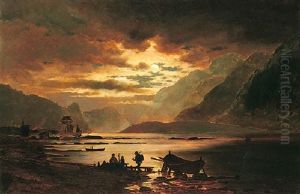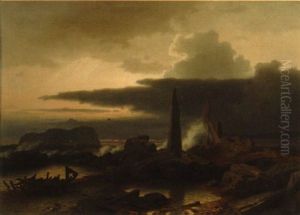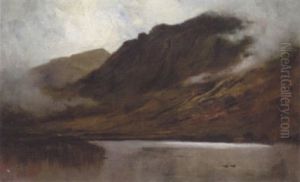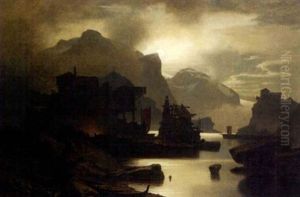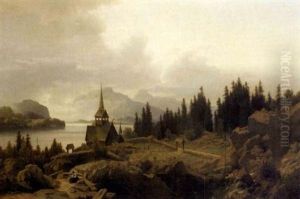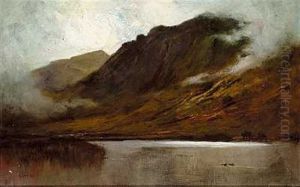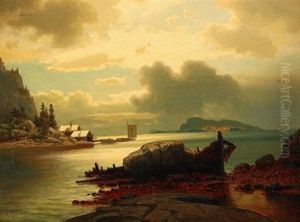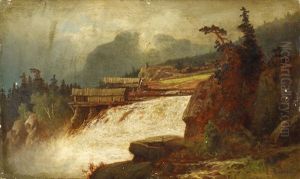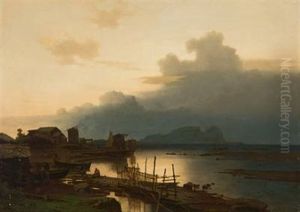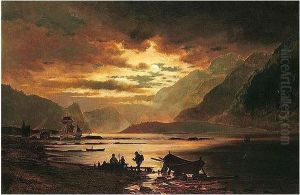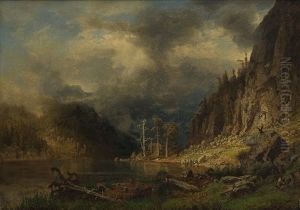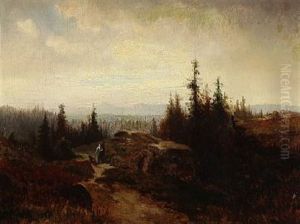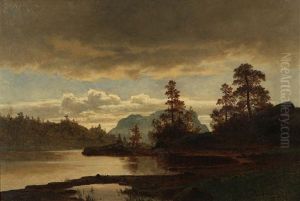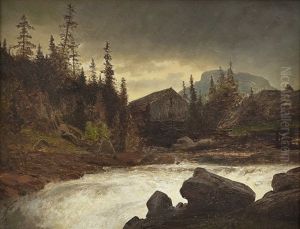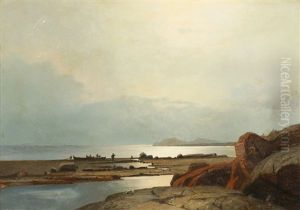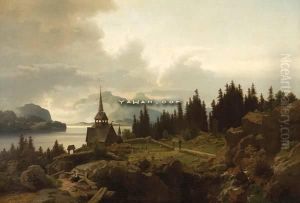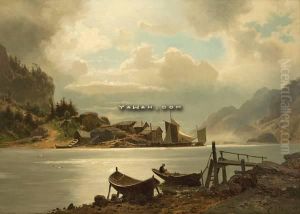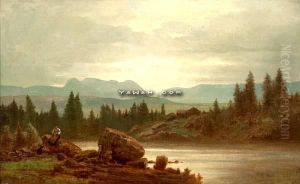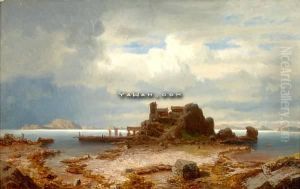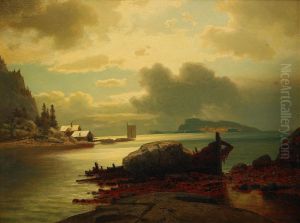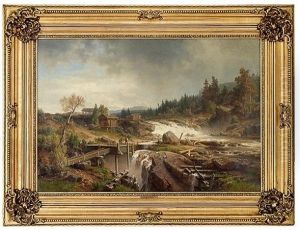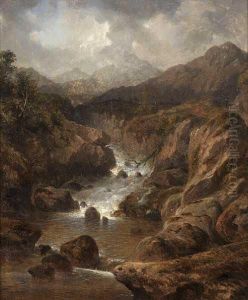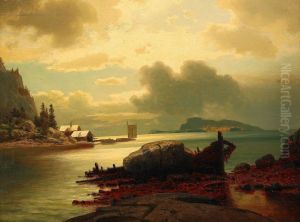Erik Bodom Paintings
Erik Bodom was a notable Norwegian landscape painter, born on August 28, 1829, in Vestby, Akershus, Norway. He is often associated with the Düsseldorf school of painting as he moved to Düsseldorf in 1850 to train under the influential landscape painter Hans Gude. Bodom's connection with Gude was significant, as the latter was a central figure in the development of Norwegian national romantic art, which Bodom would also come to embody in his work.
Bodom's landscapes are characterized by their meticulous detail, romantic atmosphere, and often dramatic use of light. His paintings frequently depicted Norwegian woodlands and lakes, infused with a sense of tranquility and a deep appreciation for the natural beauty of the Nordic landscape. Bodom's work reflects a period in Norwegian art that was deeply concerned with showcasing the unique aspects of Norway's countryside, which was a source of national pride during a time when the country was in a union with Sweden post-Napoleonic Wars.
Although Bodom spent significant periods of his life and career in Germany, his art remained thoroughly Norwegian in spirit. His works were well received in his lifetime and were exhibited in Oslo (then called Christiania), Copenhagen, and Düsseldorf, among other places. Unfortunately, his career was cut short when he died under mysterious circumstances during a fishing trip on April 15, 1879. After his death, Bodom's influence continued, and he was regarded as one of the important precursors to the later great Norwegian landscape artists, such as Frits Thaulow and Christian Skredsvig.
Despite his relatively short life, Erik Bodom left a lasting impact on Norwegian art. His paintings are still celebrated for their romantic portrayal of the Norwegian landscape and have earned him a place among the prominent artists of Norway's national romantic period.
